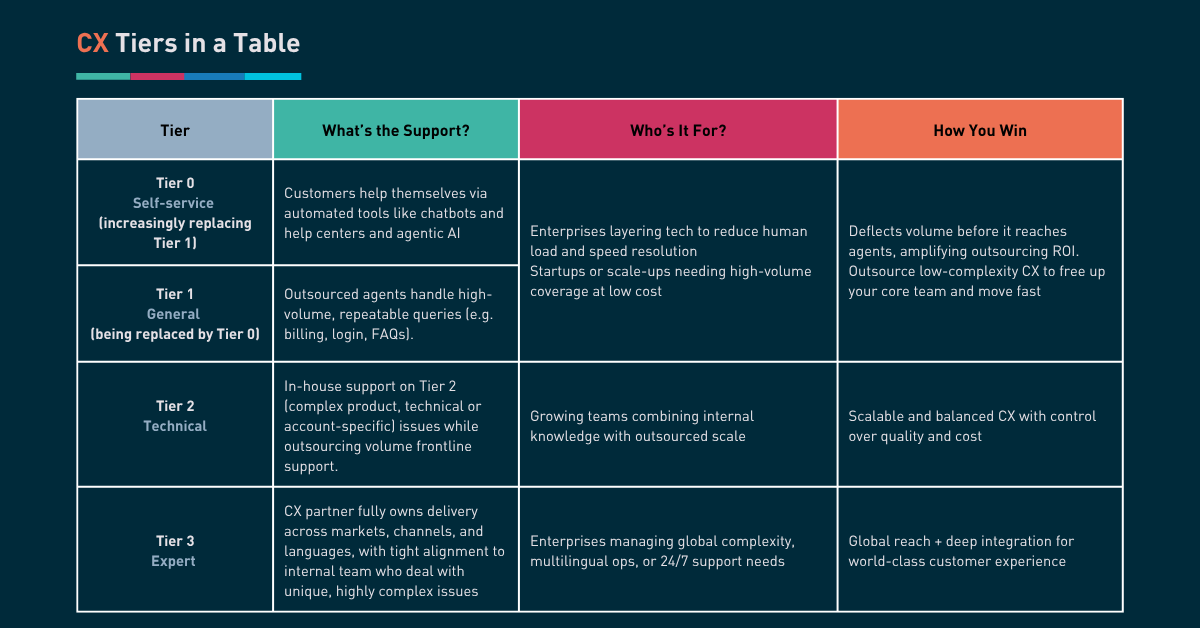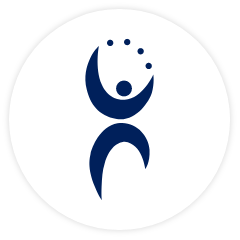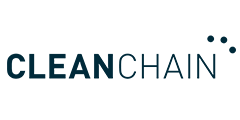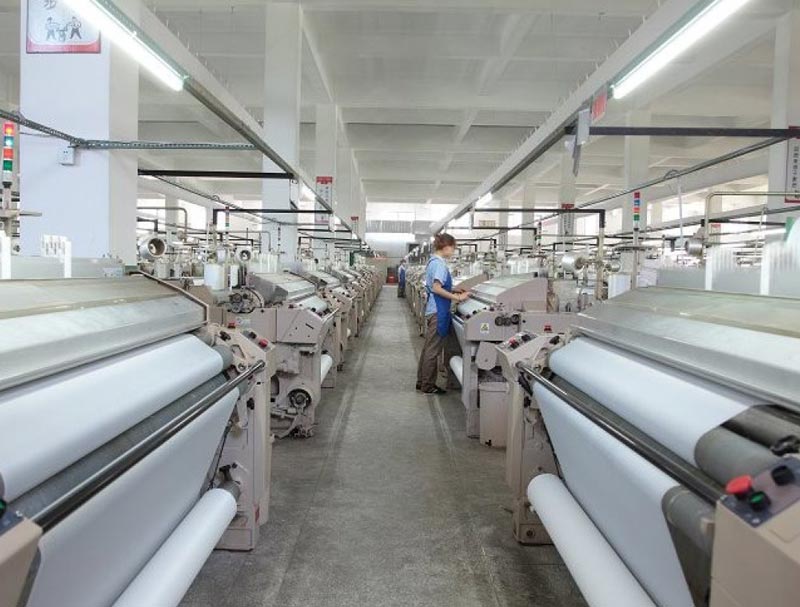Scaling your SaaS with CX Outsourcing
Article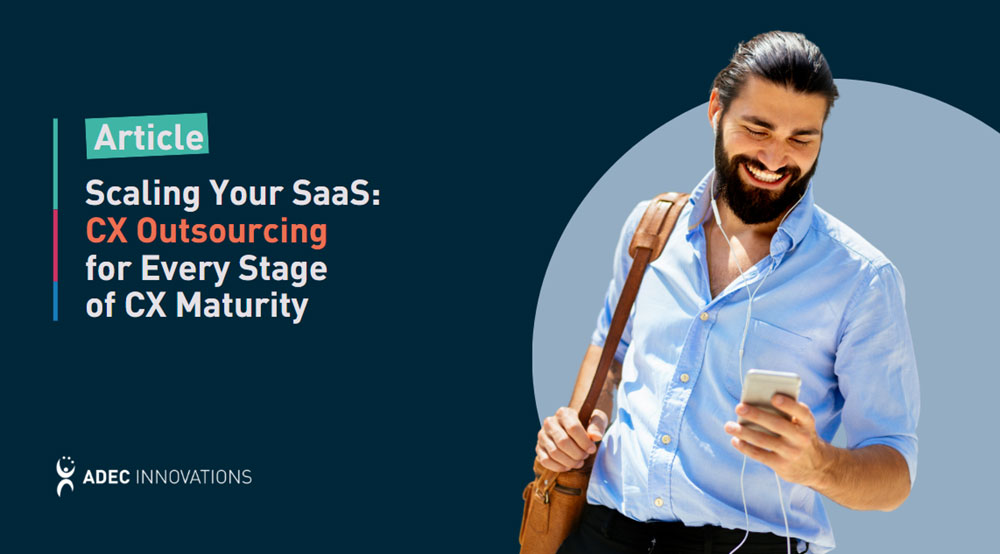
Scaling Your SaaS: CX Outsourcing for Every Stage of CX Maturity
In the battle for consumers’ attention (and wallets!), B2C SaaS brands need to prioritize customer experience (CX). How customers experience your brand shapes your growth journey, but while 80% of leaders believe they’re delivering a good experience, fewer than half of consumers agree¹. This gap is your opportunity! Find out how CX outsourcing can be your secret weapon for delivering world-class CX, no matter your growth stage and CX maturity.
What Is CX Maturity?
CX maturity refers to how well a company has developed and integrated its customer experience capabilities across the business. It reflects the evolution from reactive, ad hoc support to a proactive, strategic function that drives retention, loyalty, and growth.
A mature CX function is not necessarily about having more tools or bigger teams, it’s about building scalable systems, aligning support with business goals, and consistently delivering high-quality experiences across every channel and customer touchpoint.
In B2C SaaS, CX maturity grows in stages – from hands-on, founding team support at the startup phase, to structured processes and automation during scale-up, to personalized, omnichannel service at the enterprise level.
Why CX Maturity Matters in B2C Saas
A strong product gets customers in the door, but it’s the experience around it that keeps them there. In B2C SaaS, support, responsiveness, and ease of engagement shape how users perceive your brand and its value in their lives. As your business grows, products develop, and customer enquiries increase, the way you deliver that experience must keep pace.
What works for a small team – fast, informal, hands-on support – doesn’t hold up when volumes rise and complexity increases. Mature CX isn’t just about adding headcount or channels, though, it’s about building systems that scale without losing the human touch.
Whether you’re a startup refining product-market fit, a scale-up racing to operationalize support, or an enterprise balancing complexity and consistency, your CX approach should be built for the stage you’re in.
CX at the Startup Stage: Agility Over Perfection
At this stage, CX maturity is in its earliest form, less about scale, and more about responsiveness and learning. The focus is on speed, authenticity, and building relationships that turn early adopters into advocates. Customers expect quick answers and a direct line to your team. Support is personal, informal – often handled by founders or early hires – and tools are scrappy: think shared inboxes and manual workflows.
Top priorities:
- Fast, informal communication (live chat, email)
- Tight feedback loops to fuel product development
- Human-first, low-volume support
Where CX outsourcing fits:
Outsourcing might seem premature, but it can be a smart step toward CX maturity. Even at this stage, building a basic knowledge base lays the groundwork for future scaling. A CX partner can handle Tier 1 questions (see below), freeing up your team to focus on high-touch issues and roadmap delivery. The key is finding a partner who mirrors your brand voice, works flexibly, and provides coverage that scales with you, without adding overhead before you’re ready.
CX at the Scale-Up Stage: Efficiency Meets Consistency
This is the tipping point for CX maturity: As your user base grows, manual support models start to crack. You’re now balancing volume, quality, and efficiency. Inconsistent experiences start to erode trust, and speed alone isn’t enough.
Top priorities:
- Building scalable systems (ticketing platforms, automation, chatbots)
- Launching knowledge bases and self-serve options
- Hiring and training specialist support roles
Where outsourcing fits:
This is where outsourcing starts to shine: The right partner helps you extend support across time zones and channels, without overloading your team or bloating head count. It also enables fast experimentation with support models and feedback loops that fuel product improvement.
CX at the Enterprise Stage: Personalization at Scale
At enterprise scale, you’re delivering tailored experiences across millions of touchpoints. Your support must be proactive, data-driven, and deeply integrated across departments like marketing, product, sales, and post-purchase support.
Top priorities:
- Personalization powered by customer data platforms (CDPs)
- Advanced segmentation and lifecycle-based CX
- Consistent brand voice across global regions
Where outsourcing fits:
Outsourcing here goes beyond cost savings; it’s about capacity and specialization. Global CX partners can manage localized support, ensure 24/7 SLAs, and bring best-in-class tooling and analytics. The right partner becomes a true CX co-strategist, helping align support with broader business goals. This shift reflects CX maturity and operational efficiency.
The CX Outsourcing Advantage: Agility Without Compromise
No matter your stage, outsourcing to a trusted CX partner offers benefits that internal teams can’t always match:
- Scalability – Ramp support up or down with demand spikes
- Specialization – Access trained agents fluent in SaaS workflows
- Cost-efficiency – Reduce overheads while maintaining quality
- Global coverage – Ensure responsiveness across time zones
Outsourcing doesn’t mean offloading; rather, it means amplifying. With the right provider, you gain operational excellence while keeping your CX deeply aligned with your mission.
Create CX Moments that Matter with ADEC CX
While customers don’t care how big your team is, they do care about how you make them feel. Whether you’re just getting started or optimizing at scale, CX outsourcing can be the bridge between your current capabilities and your customer’s expectations.
We provide CX strategy, solutions and services that fuel business growth with our one-stop-CX-shop.
Learn more about our capabilities and capacities or contact us to find out more about how we can help you with your CX outsourcing needs.
Sources:
¹ What Do Consumers Really Think About Commerce Experiences, The Wall Street Journal, 2024
